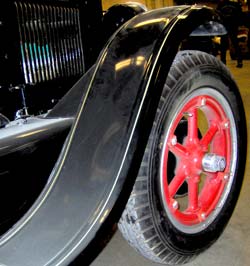Tube-Type Tires
 The Ubiquitous TubeTubes can be found in almost every conceivable application, from personal mobility equipment, such as wheelchairs, bicycles and motorcycles, to giant mining machines. Tubes present particular and unique challenges not present in tubeless tires. Tubes tend to squirm inside a tire as the tire rotates and the constant flexing caused by the roughness of the road surface will increase the chances of tube failure. As speed increases so does the squirming of the tube. This condition is magnified if the tube is underinflated. To minimize this, inflate the tire to the maximum recommended air pressure indicated on the tire's sidewall. Installing Ultraseal Tire Life Extender/Sealer in a tube will provide substantial puncture protection and enhanced air retention. Because Ultraseal is not coming in direct contact with the tire, it cannot enhance the casing or protect the internal structure of the tire. When a tire sustains a puncture, the puncturing object penetrates the tire and tube and Ultraseal will seal around the puncturing object, holding the air within the tube. If the object rips the tube, or rocks as the tire rotates, Ultraseal can only slow the air loss. This is often the case when the object is of an irregular shape or the wound is too large. At earliest opportunity, remove the puncturing object, then rotate the tire or drive the vehicle allowing Ultraseal to reenter the wound. This is best performed where an air source is available. If a large object has punctured the tire, leave it undisturbed and take the vehicle in for tire repair or replacement as required. It is recommended that a tire inspection program be initiated for vehicles with tube tires traveling over public roads (over 35 mph). Whenever possible, use radial tubes. Radial tubes are thicker, more durable and provide for better Ultraseal compatibility and performance. Ultraseal is somewhat less effective in tube-type tires as compared to tubeless applications. |





